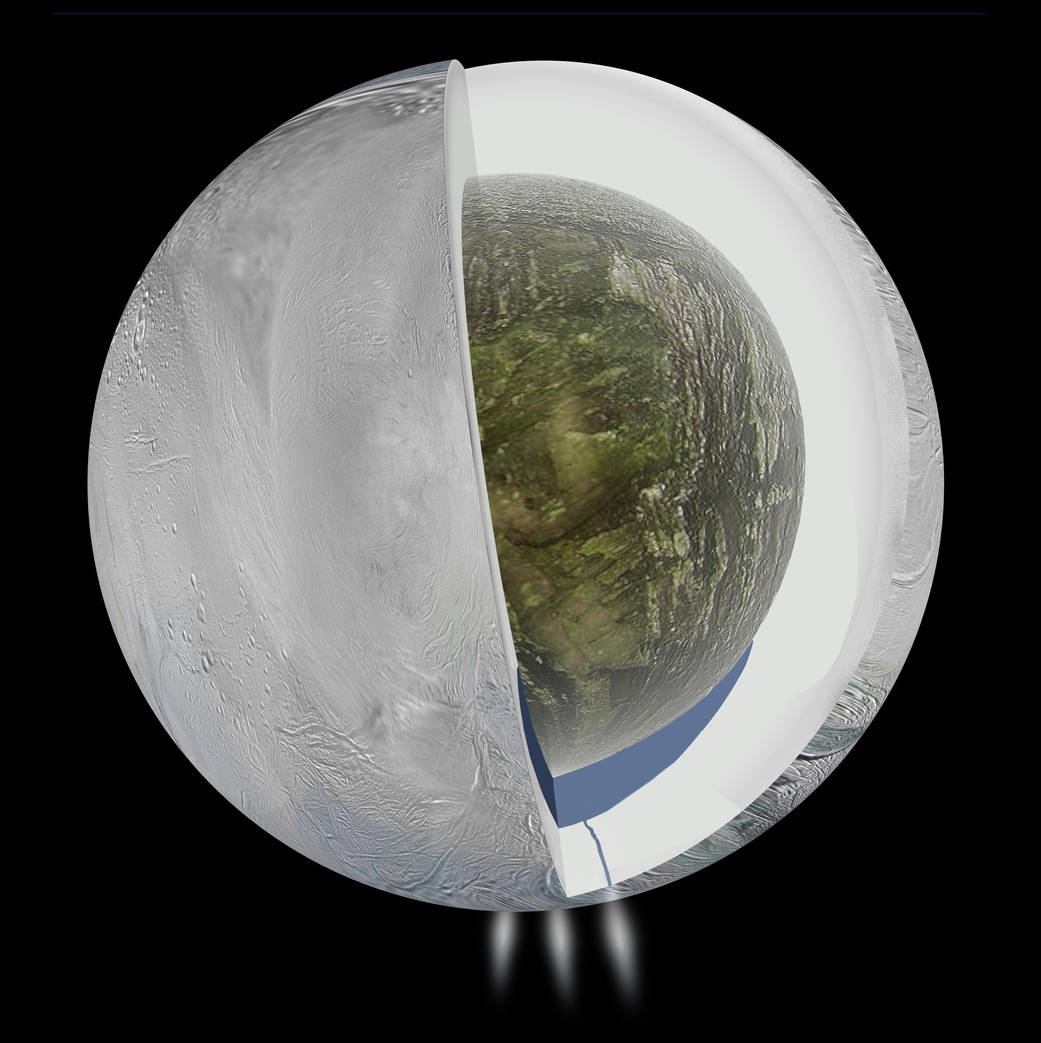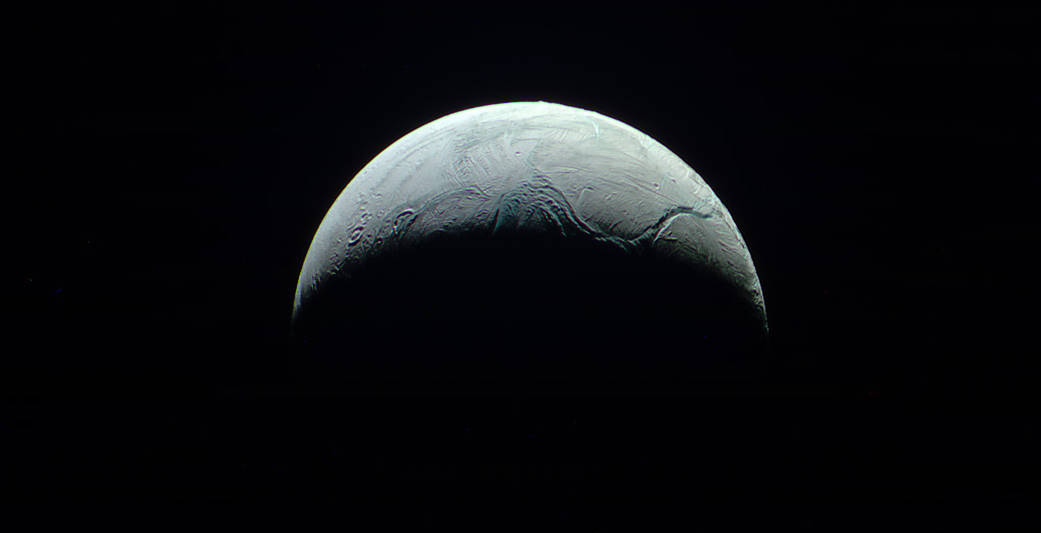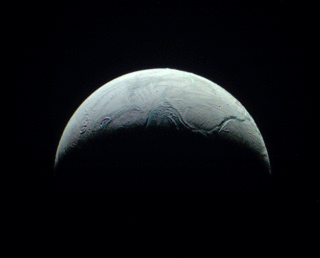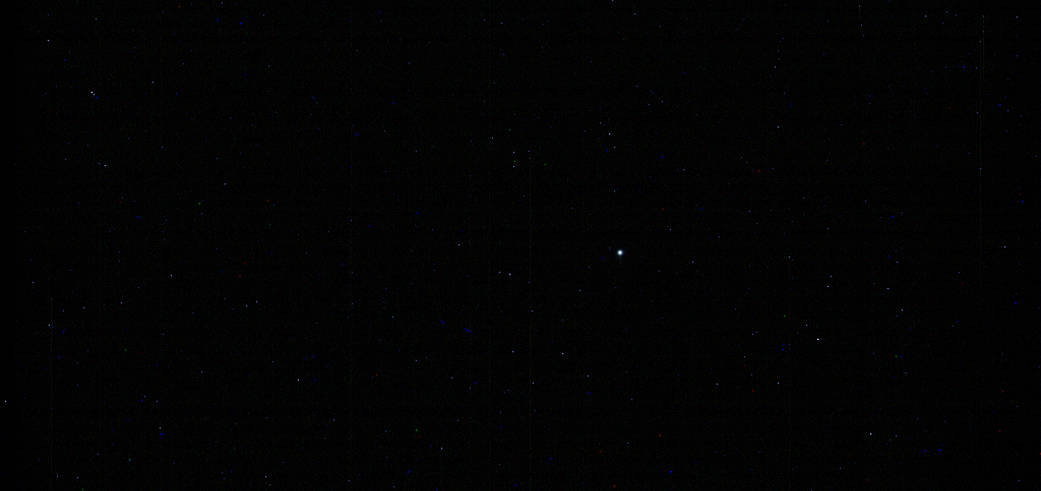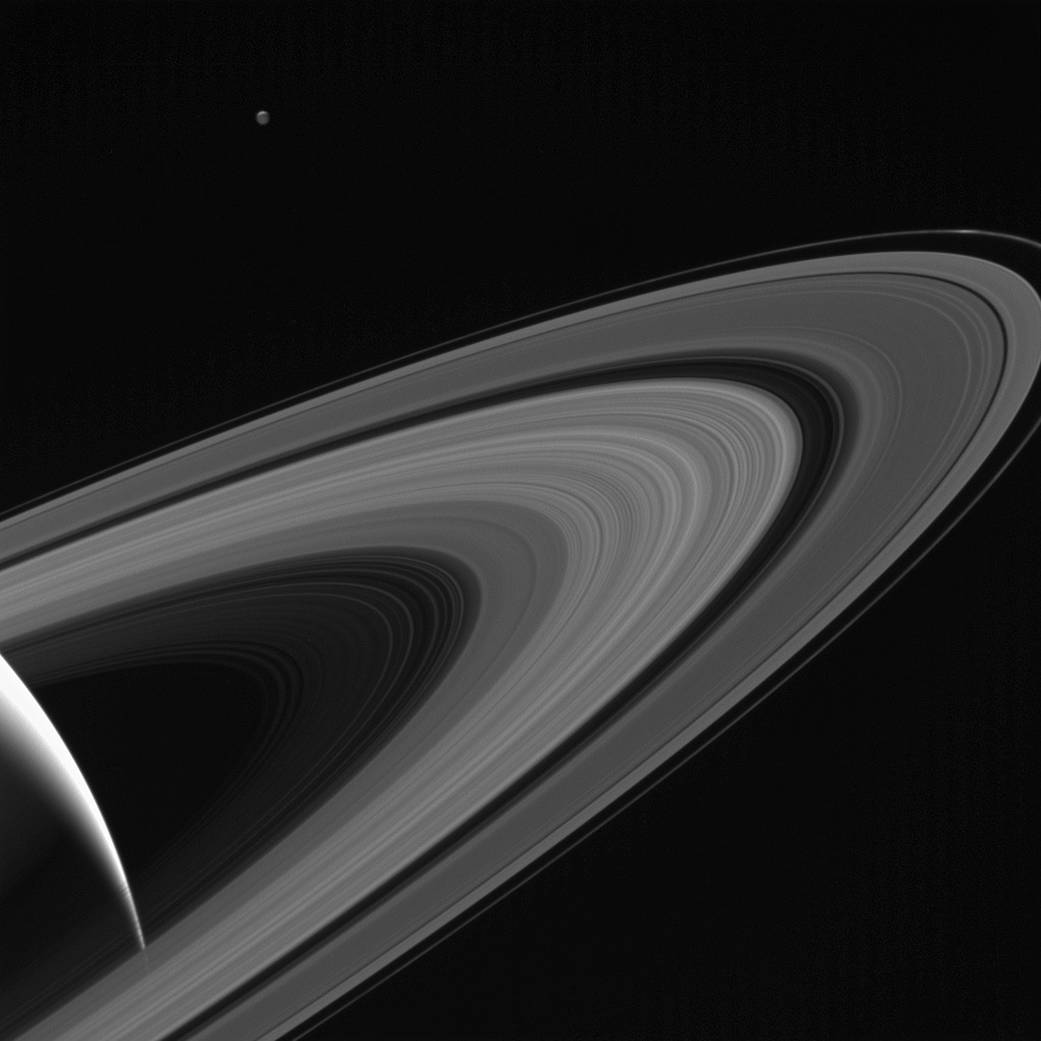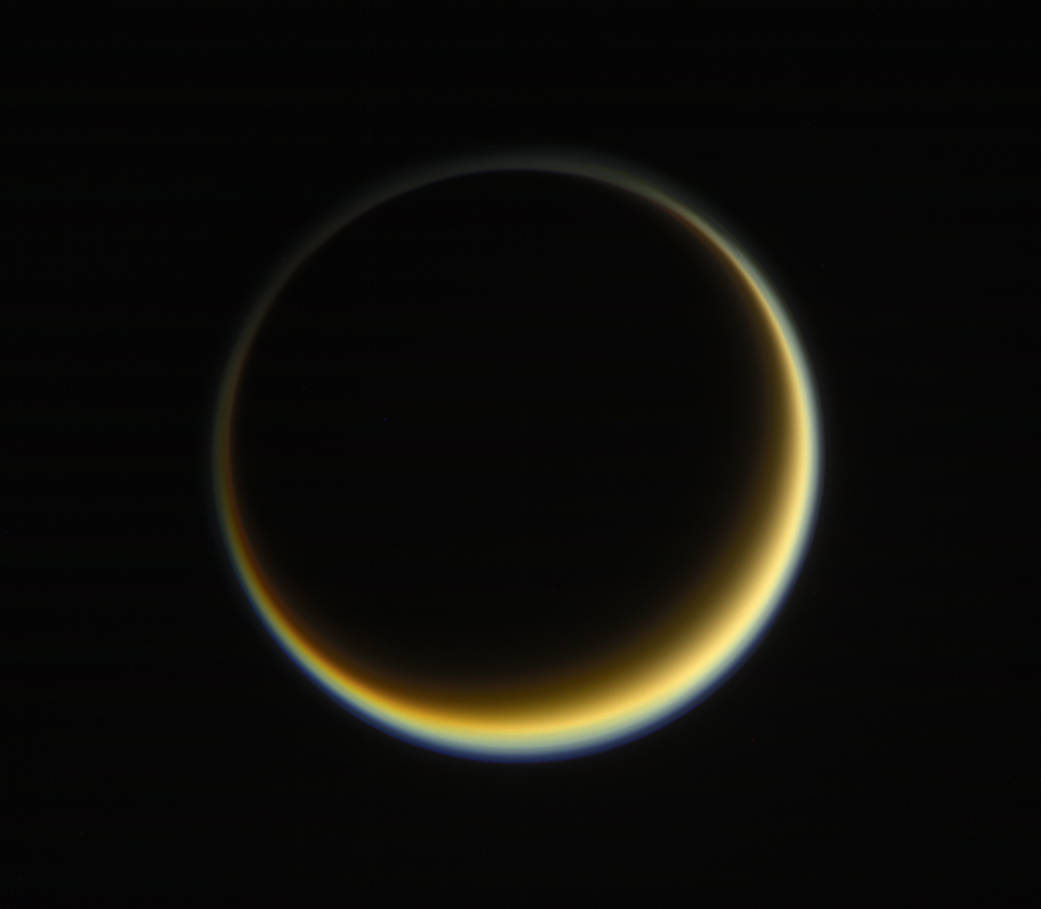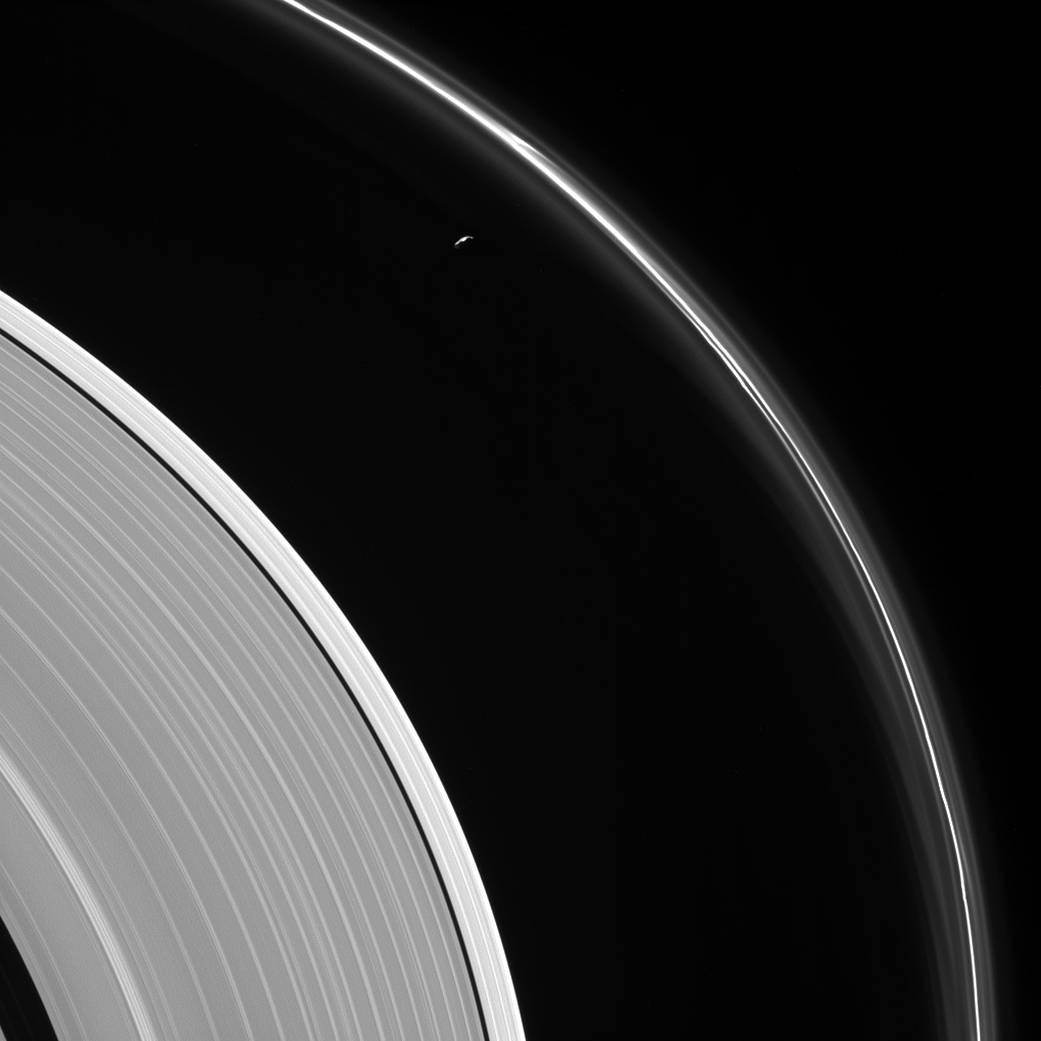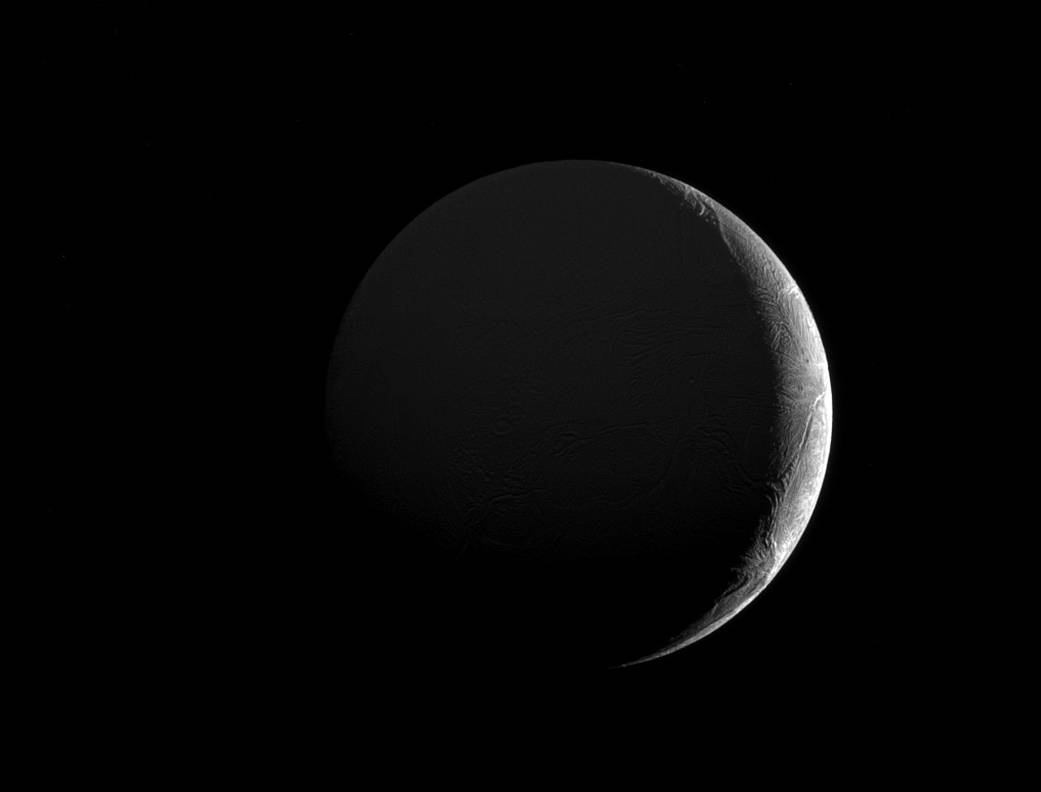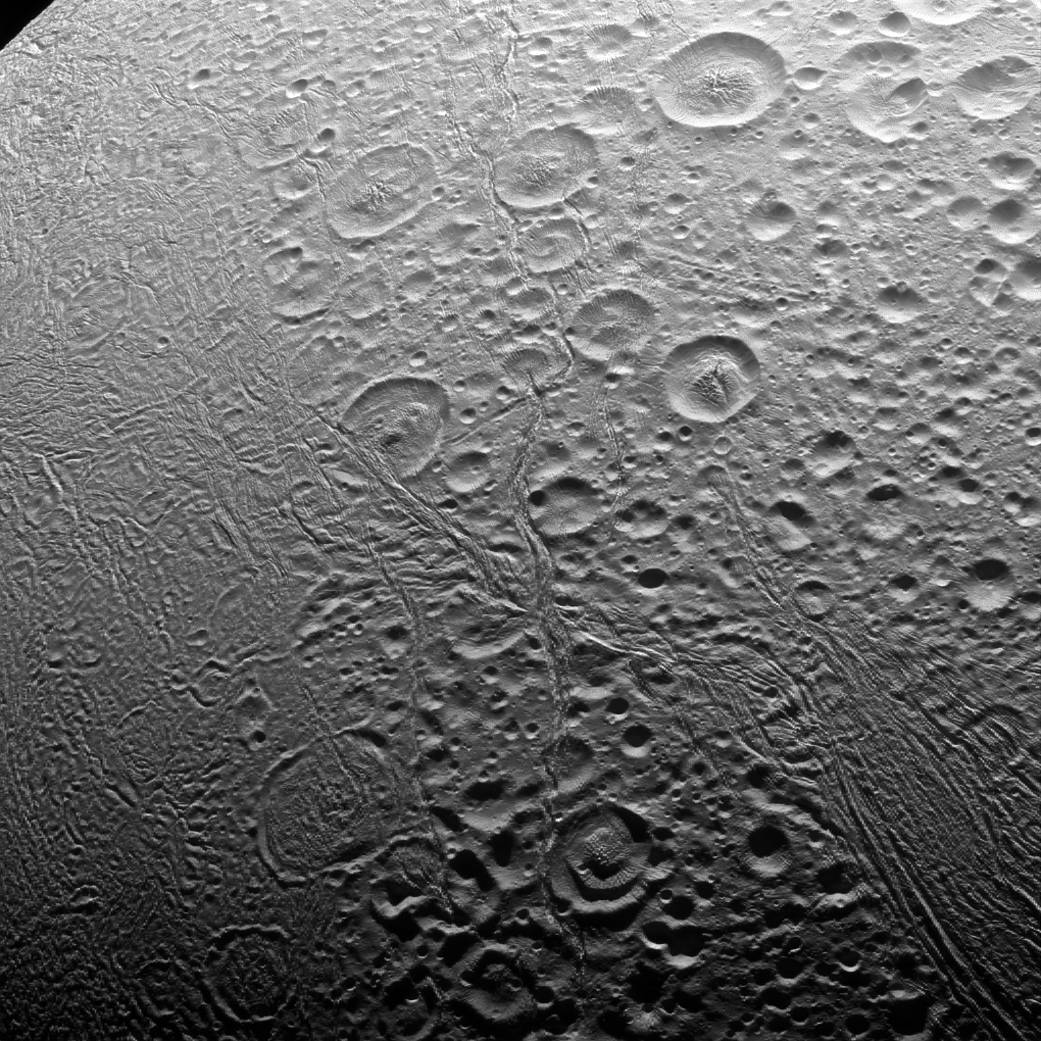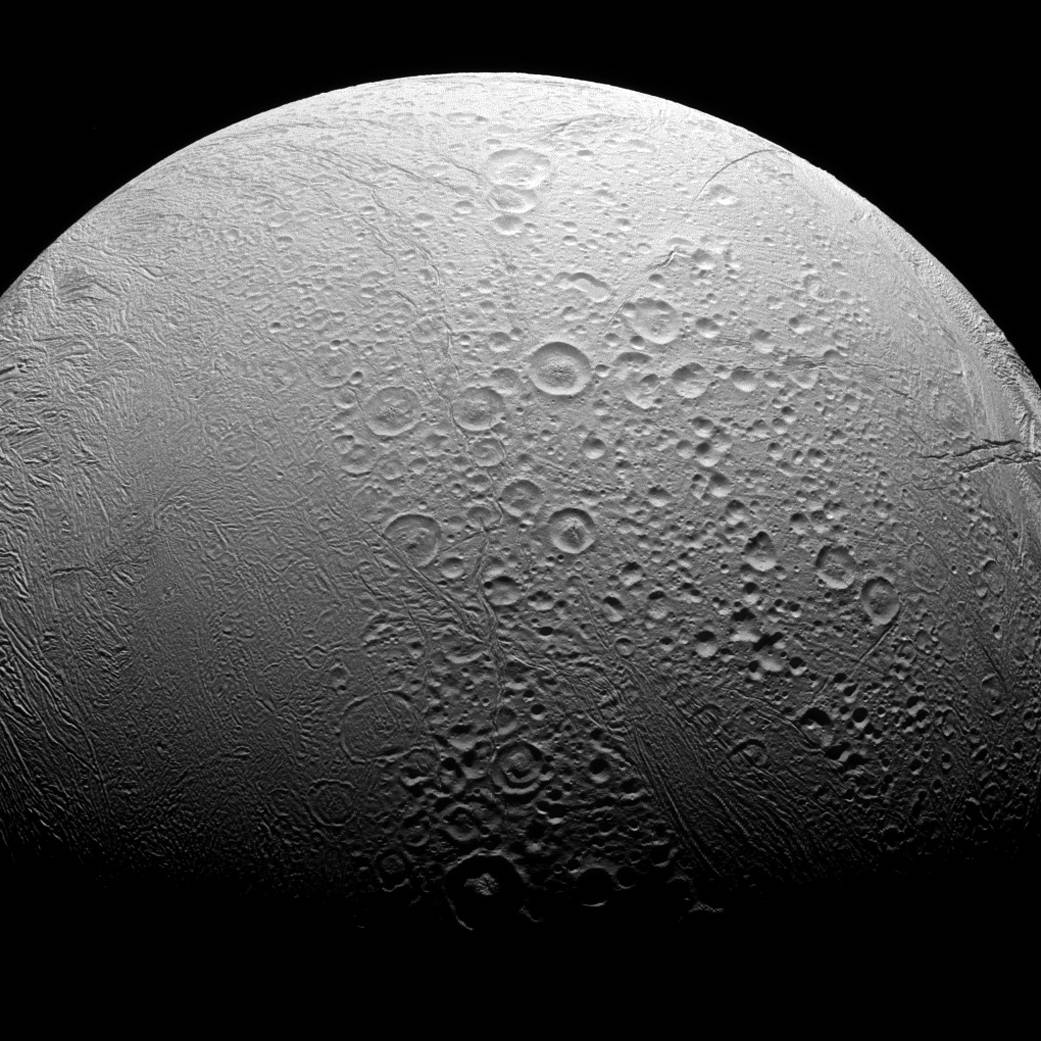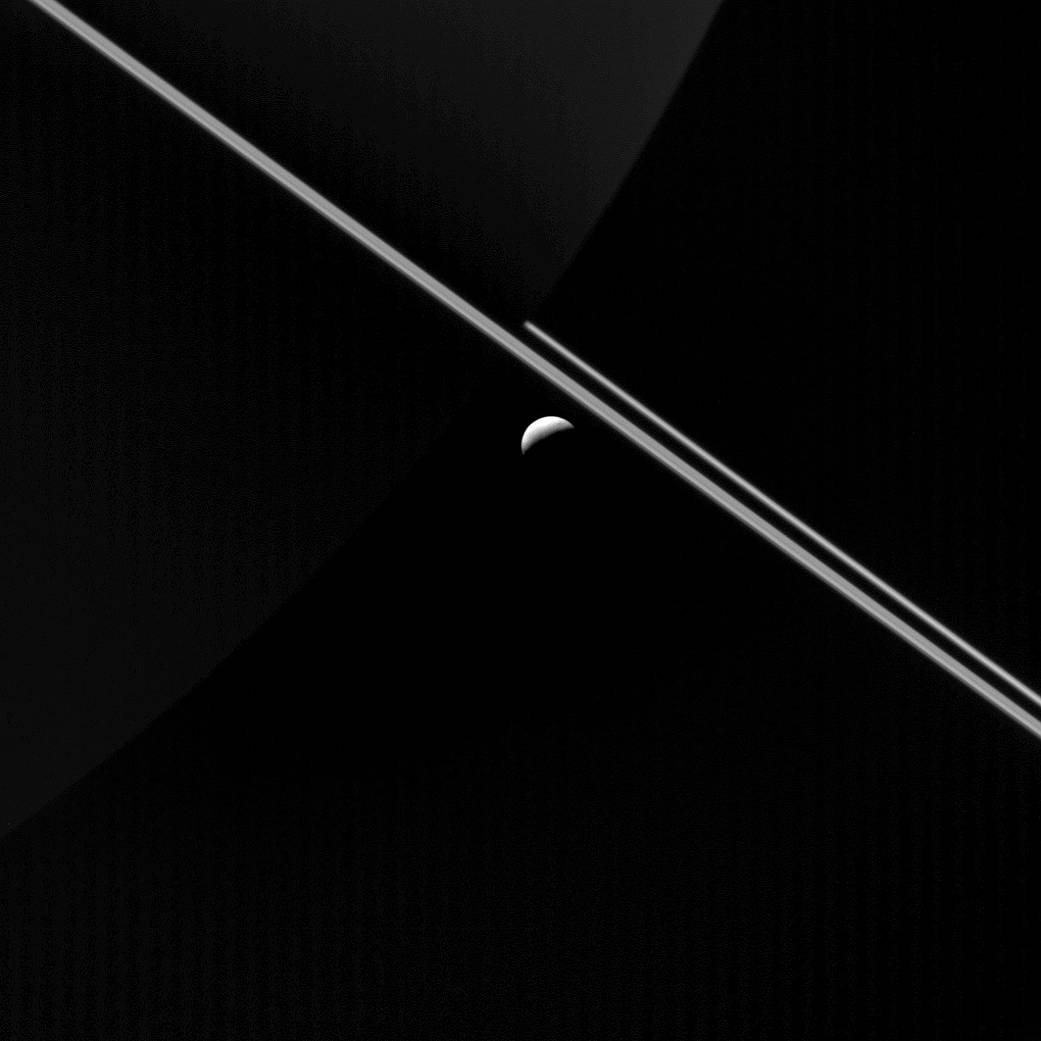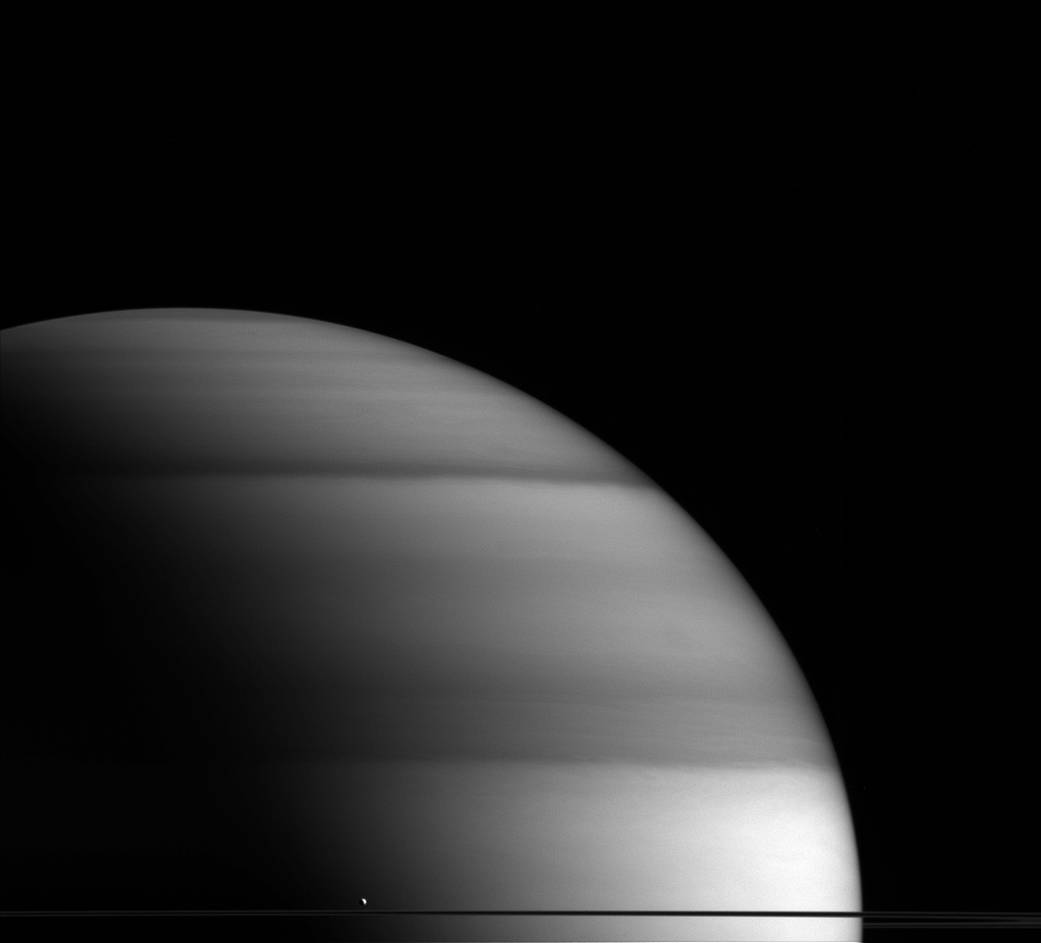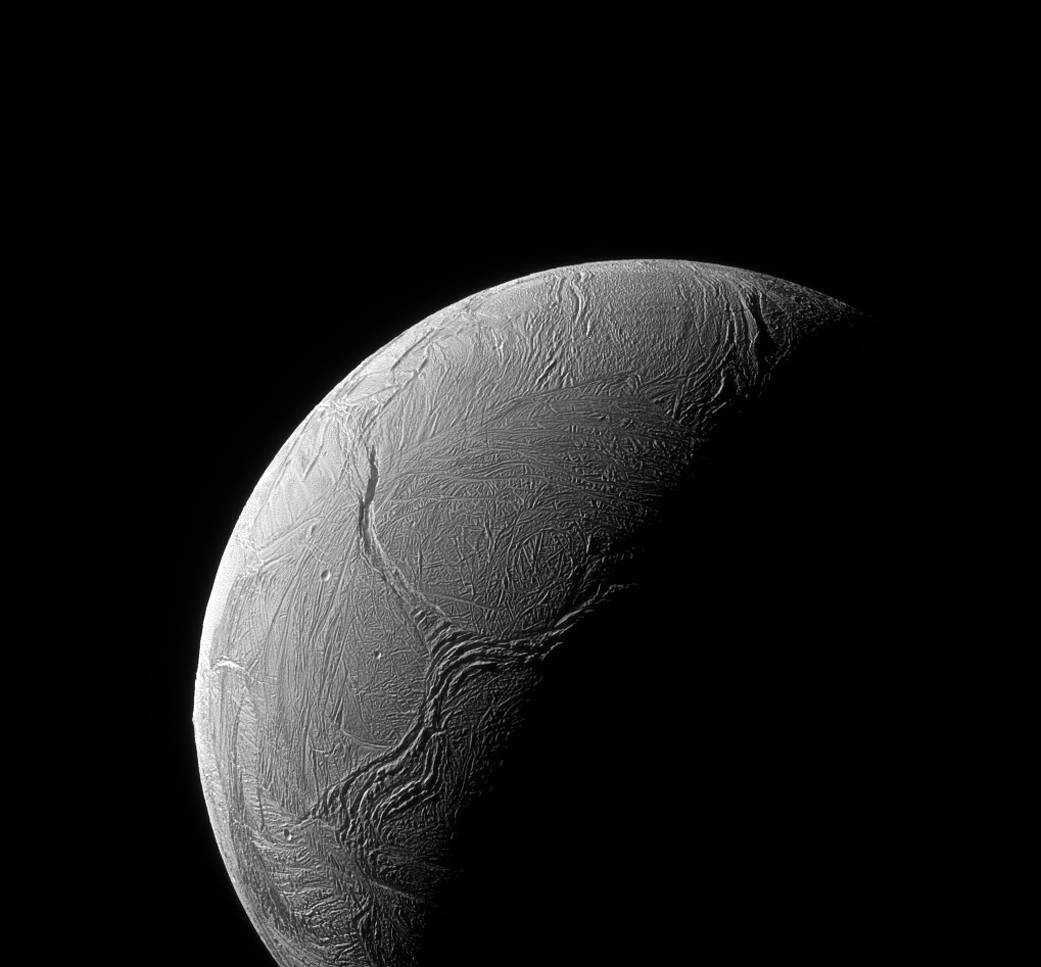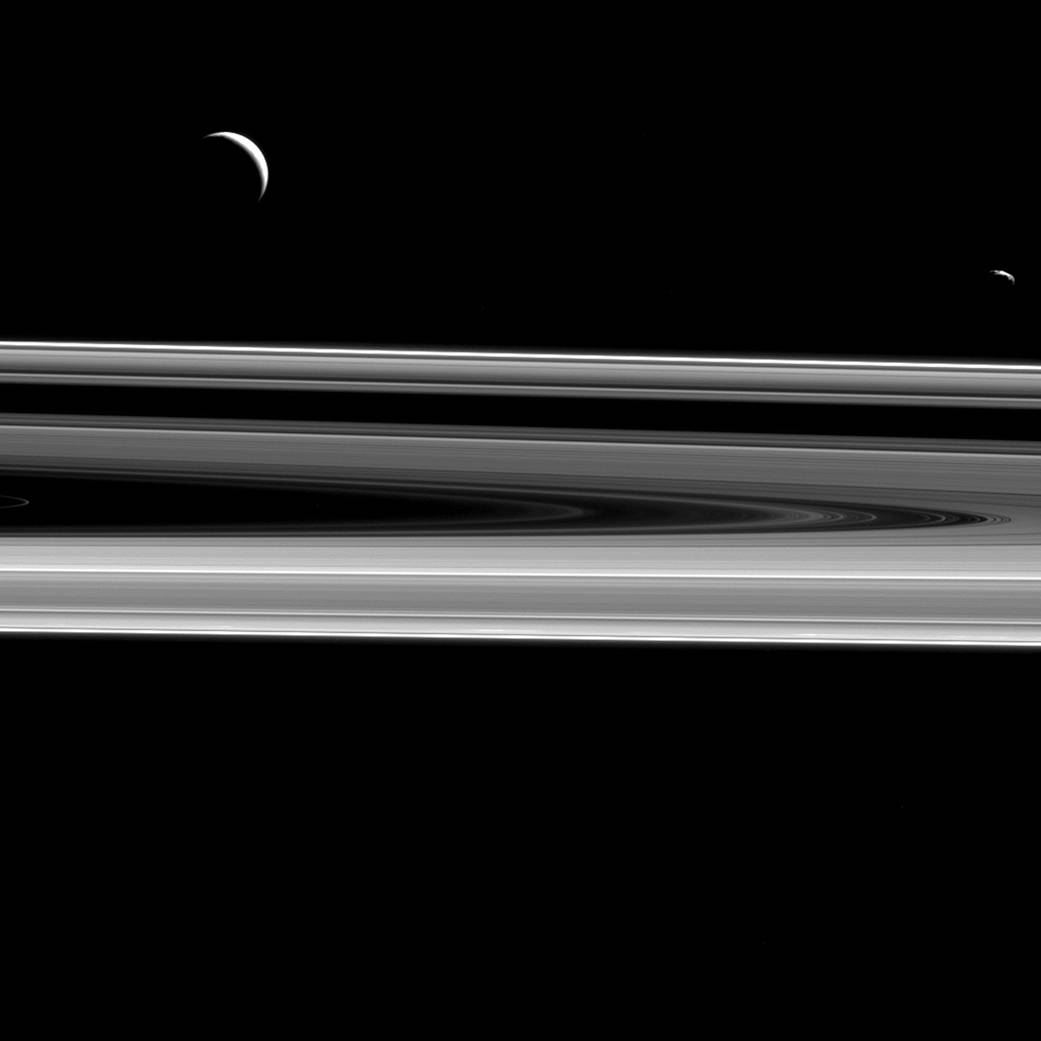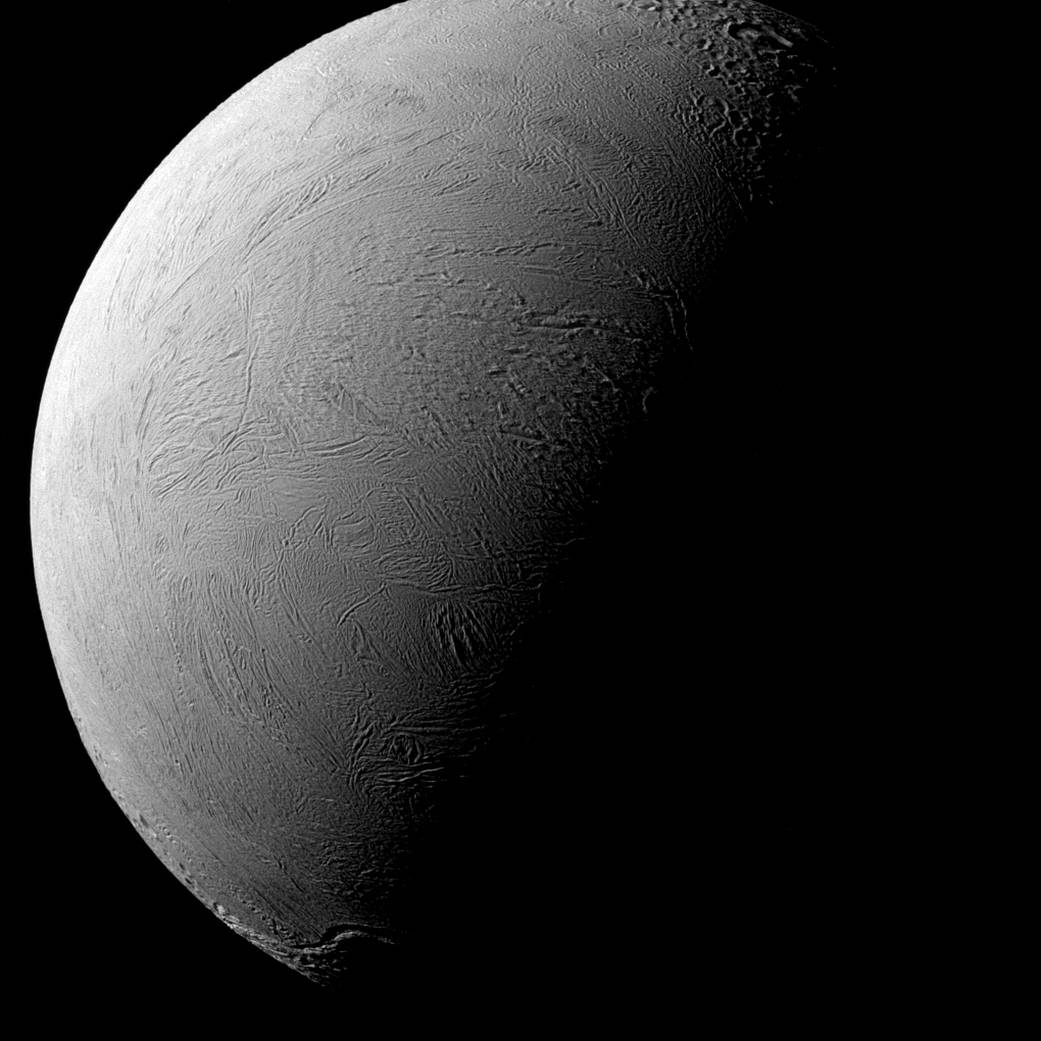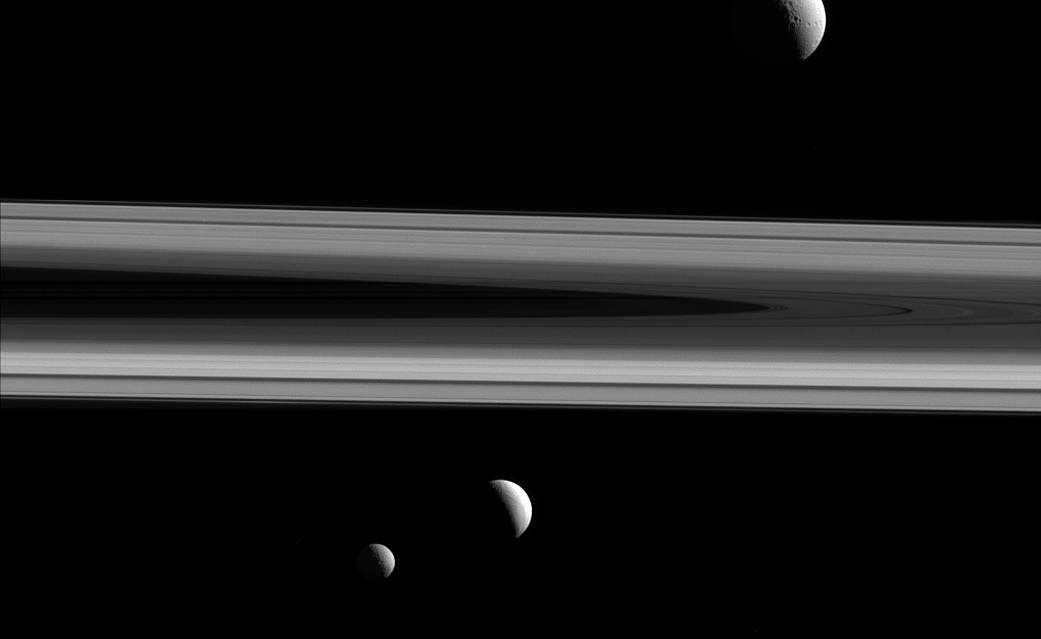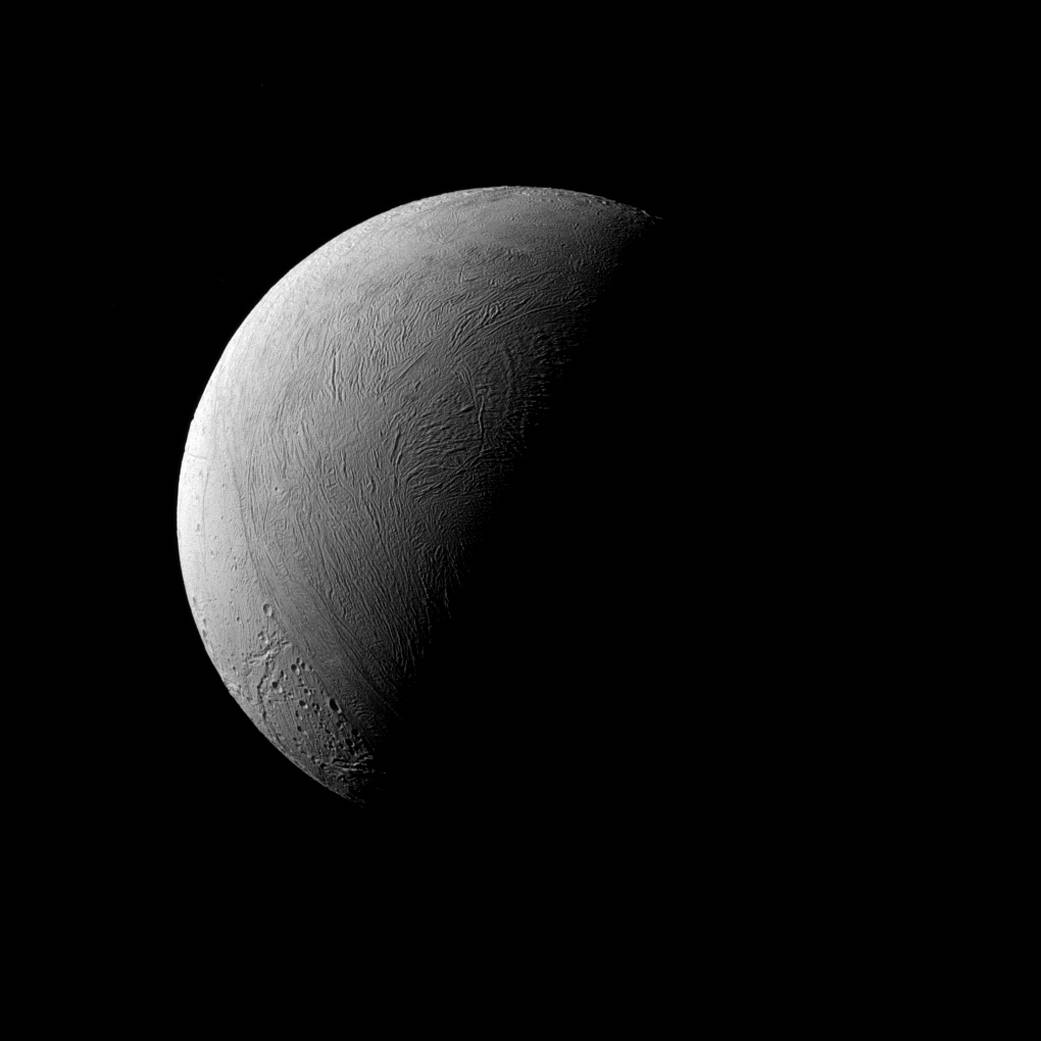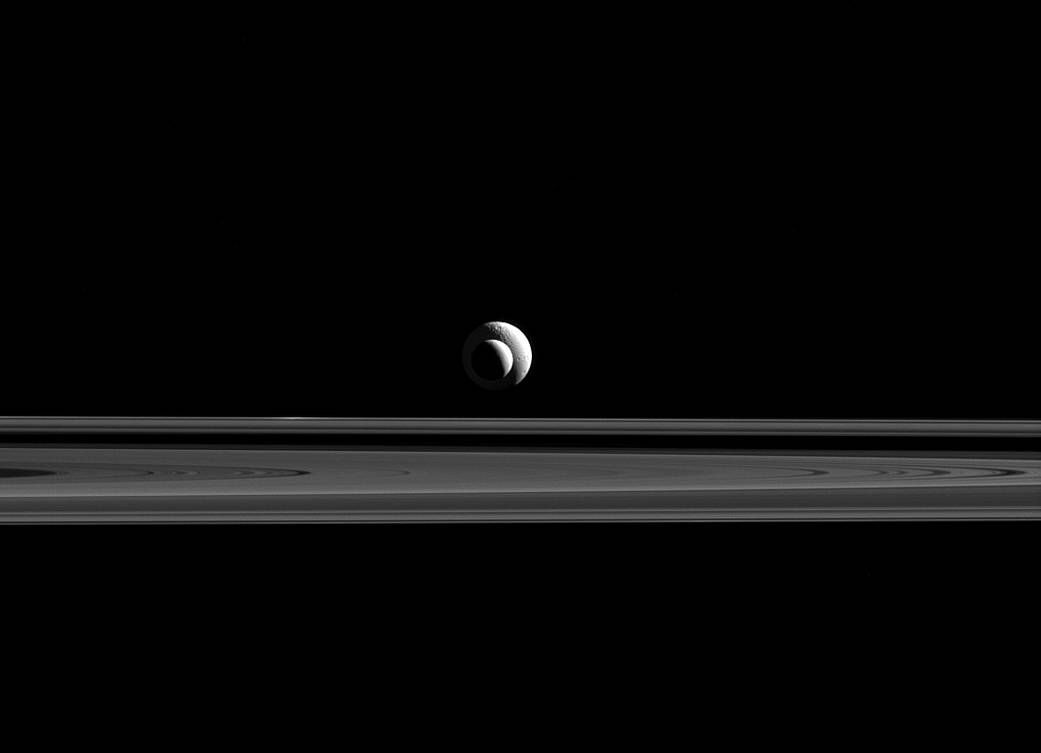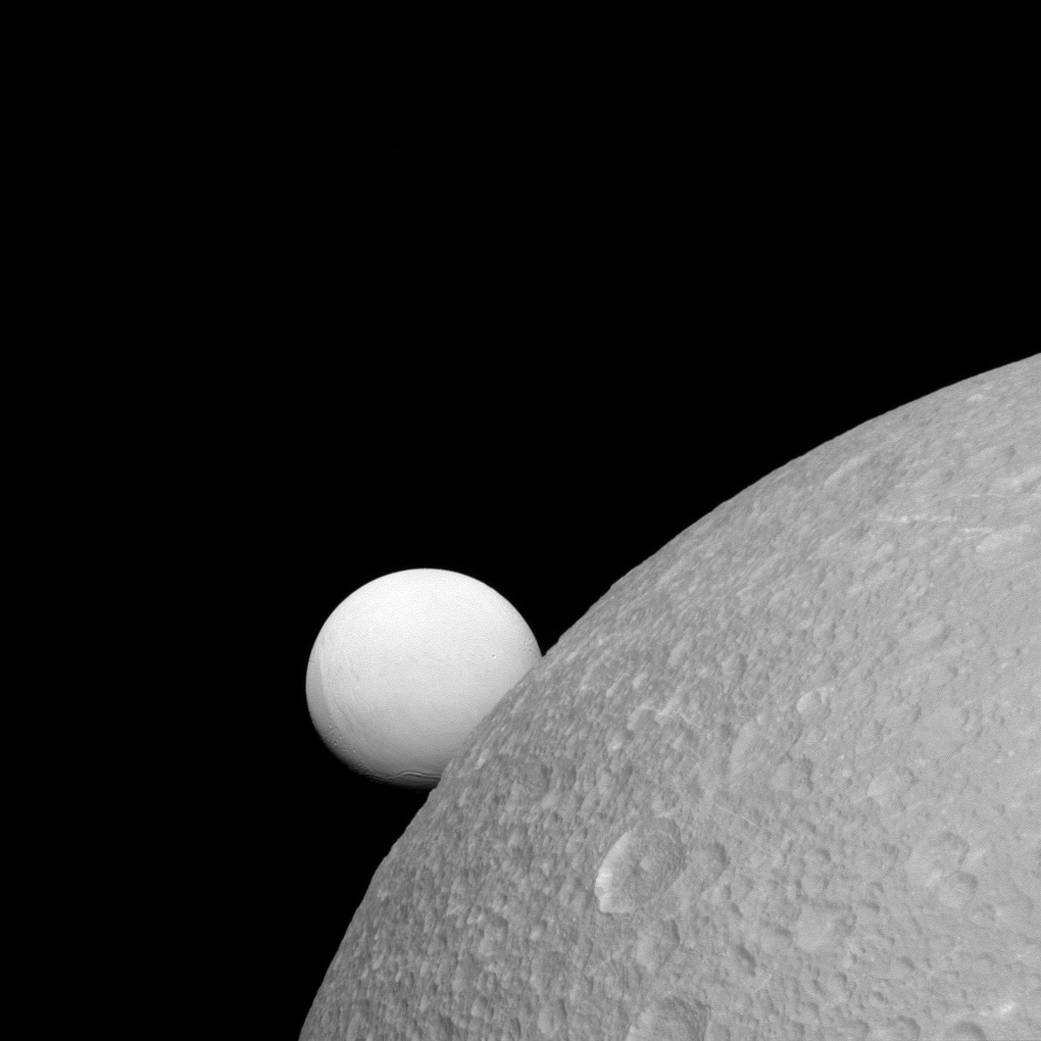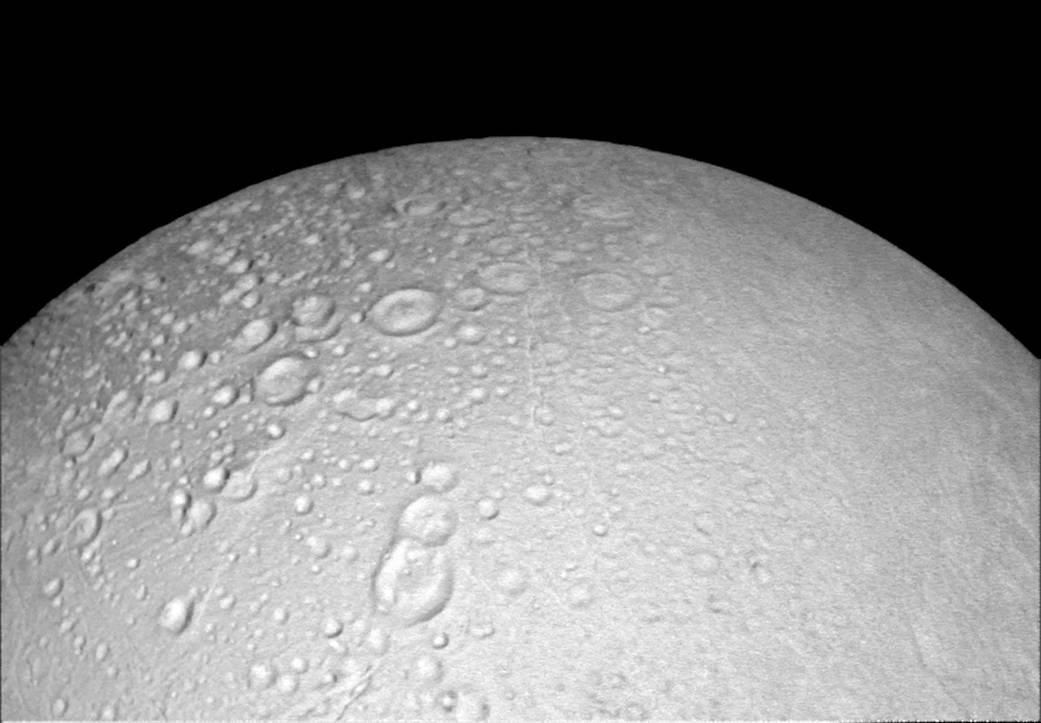During its final close flyby of Saturn's moon Enceladus,
NASA's Cassini spacecraft revisited a landscape, and a mystery, that it
had originally glimpsed more than 10 years earlier.
In views of this terrain captured during a 2005 flyby (see PIA06188),
imaging scientists noticed small dark spots of an uncertain nature.
Observing the same features in this false-color view, at higher
resolution than before, provides some new insights. The spots are
evidently large, relatively dark protrusions of solid "bedrock" ice and
ice blocks scattered on and around the prominent ridge that runs across
the scene from north to south (from top center toward lower left). The
ice blocks range in size from dozens to hundreds of feet (tens to
hundreds of meters).
The false-color view uses an ultraviolet filter centered at 338
nanometers for blue, a green filter centered at 568 nanometers for green
and a near-infrared filter centered at 930 nanometers for red -- thus
covering a wider spectrum region than the human eye.
As in earlier Cassini views of Enceladus using the same combination of color filters (see PIA06254),
green-hued features represent coarse-grained or solid ice. Exposures of
these kinds of ices are also found on the walls of cracks and troughs
in this scene and elsewhere on Enceladus.
To an observer on the surface, the prominent north-south trending
ridge might look superficially like icy flatirons (tilted, triangular
outcroppings of rock), but probably more shallowly dipping than
terrestrial examples. The exposed line of ice blocks along its ridge
crest might make it look a bit like a hogback (a narrow ridge with steep
sides, often with vertical rocky outcrops along the top).
On Enceladus, with no wind to scour loose particulate ice or "snow"
off of them, the solid blocks are probably cleared by some combination
of downslope movement of particulates, and perhaps sublimation.
This image has a spatial scale of about 220 feet (67 meters) per
pixel at its center, which is nearly twice the resolution of the earlier
view (PIA06188).
This terrain is on the moon's Saturn-facing side, a few degrees south
of the equator. The view has been rotated so that north on Enceladus is
up. The view was obtained by the Cassini spacecraft narrow-angle camera
on Dec. 19, 2015.
The Cassini mission is a cooperative project of NASA, ESA (the
European Space Agency) and the Italian Space Agency. The Jet Propulsion
Laboratory, a division of the California Institute of Technology in
Pasadena, manages the mission for NASA's Science Mission Directorate,
Washington. The Cassini orbiter and its two onboard cameras were
designed, developed and assembled at JPL. The imaging operations center
is based at the Space Science Institute in Boulder, Colorado.
For more information about the Cassini-Huygens mission visit http://saturn.jpl.nasa.gov and http://www.nasa.gov/cassini. The Cassini imaging team homepage is at http://ciclops.org.
Last Updated: Aug. 4, 2017
Editor: Martin Perez
